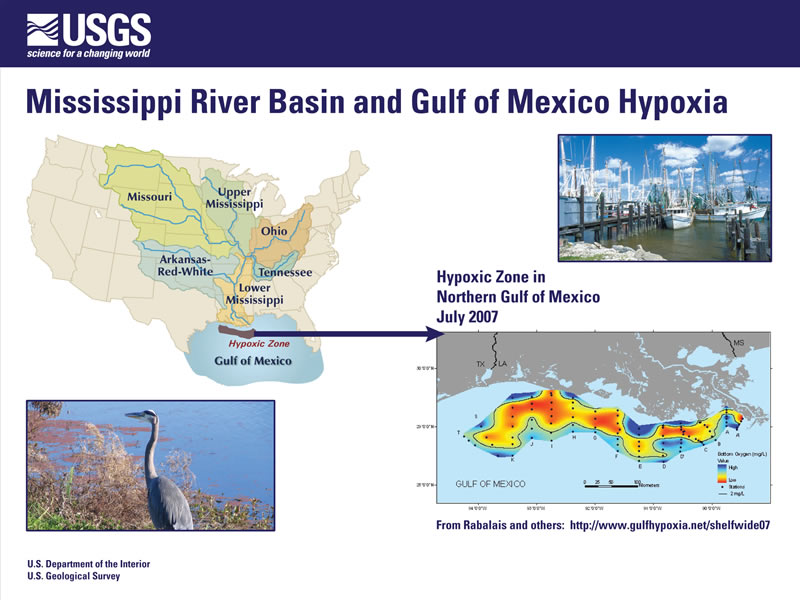National Water-Quality Assessment (NAWQA) Project
Back to Article Information || Next Figure >>

Excessive nutrients, in particular nitrogen and phosphorus, have resulted in the growth of large amounts of algae that decay and consume oxygen, thereby causing a zone of low dissolved oxygen or “hypoxic zone” in the Northern Gulf of Mexico. This can stress and cause death in bottom-dwelling organisms, threatening the economic and ecological health of one of the nation’s largest and most productive fisheries.
The USGS findings help fill important gaps in information on sources of phosphorus in the Mississippi River Basin at a time when recognition of phosphorus is expanding as an important contributor to Gulf hypoxia. The joint federal-state Gulf of Mexico Hypoxia Task Force is evaluating recommendations by EPA’s Science Advisory Board to set reduction targets of at least 45 percent for both nitrogen and phosphorus in an effort to shrink the size of the “hypoxic zone” to 5000 km2 by 2015.